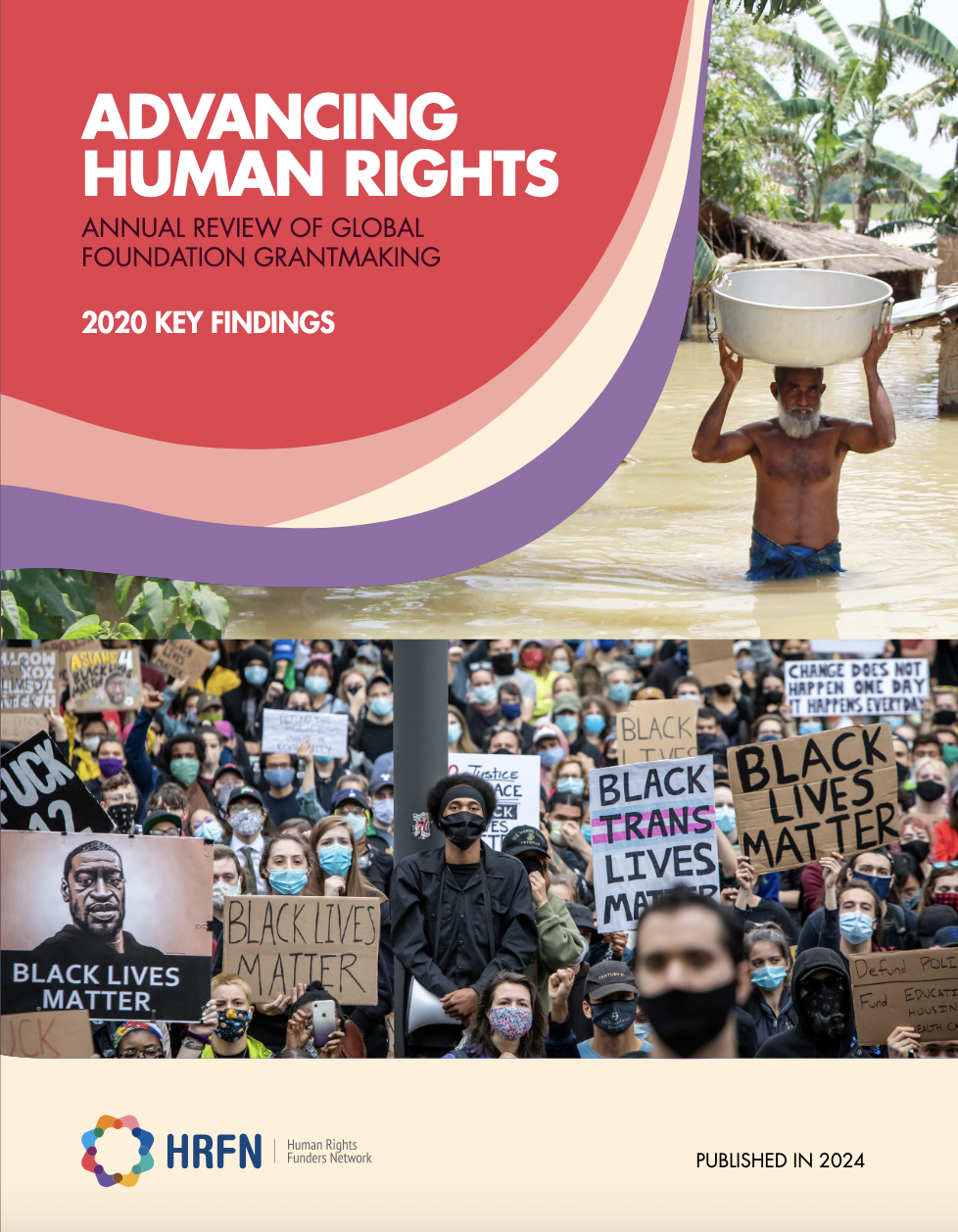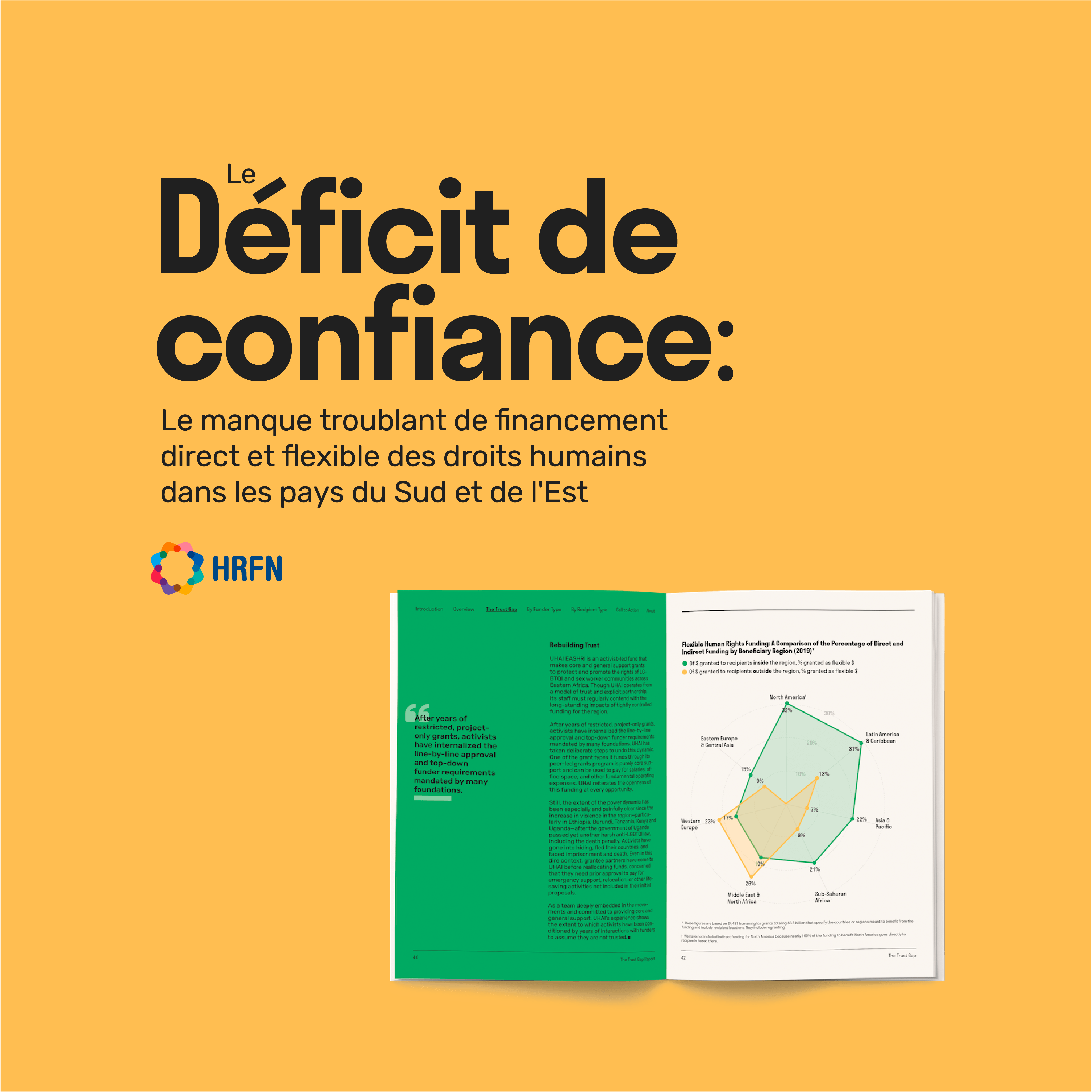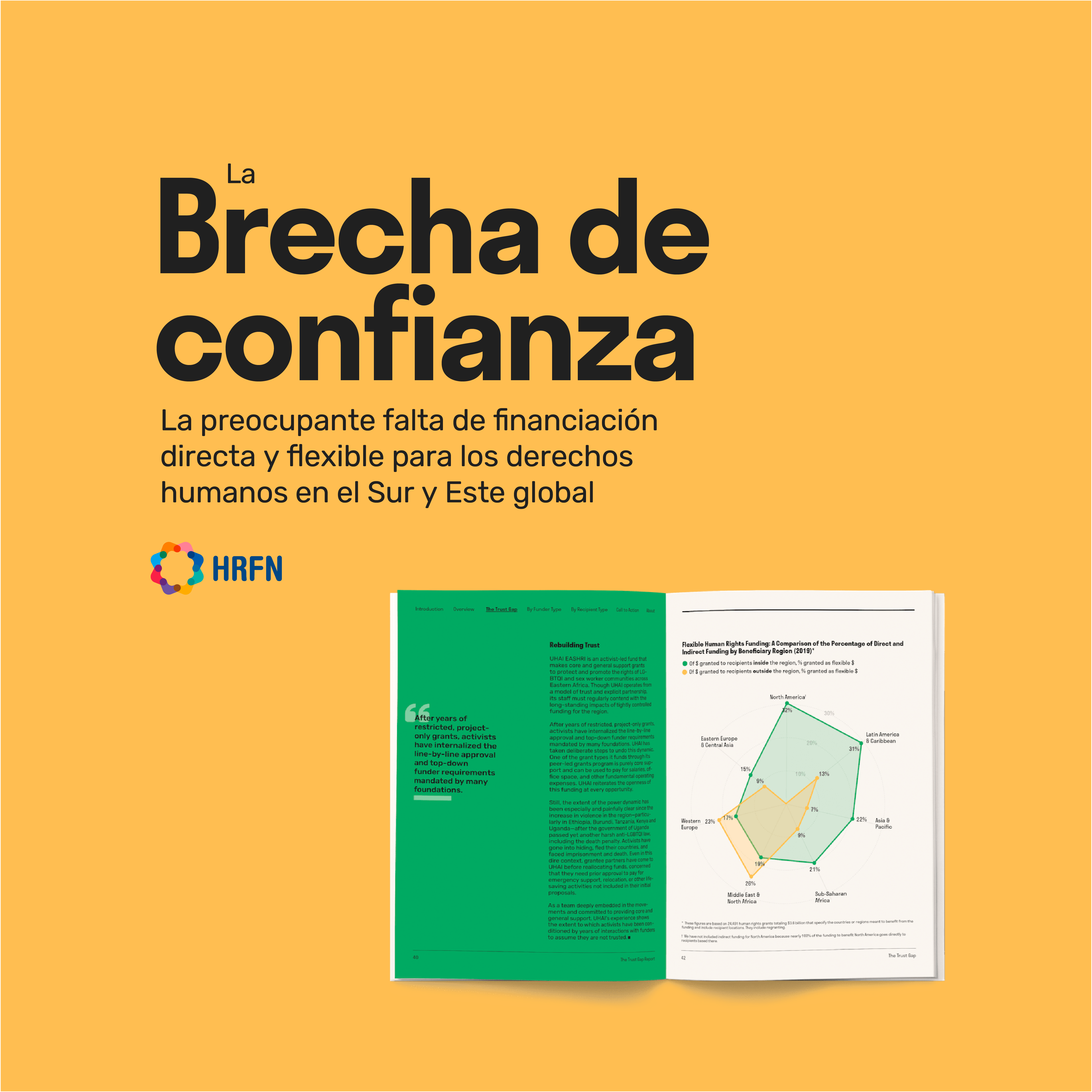Funding For Intersectional Organizing: A Call To Action For Human Rights Philanthropy
HRFN’s new report, Funding for Intersectional Organizing: A Call To Action For Human Rights Philanthropy, examines the state of global human rights funding across issues and populations to explore where support for intersectionality may truly exist.
The report is the first comprehensive and global analysis of when and if grants to support human rights reach beyond a single issue or community. The findings show that a resoundingly small fraction of human rights funding supports activism that cuts across multiple communities or issues. Just 18% of human rights grants name two populations, and less than 5% support three or more.
There are glimmers of hope. Funders recognize the ways issues and identities intersect. We find hopeful models of intersectional grantmaking and a deep desire among funders to support movements across issues and communities.
Key Findings: Español / Francais




